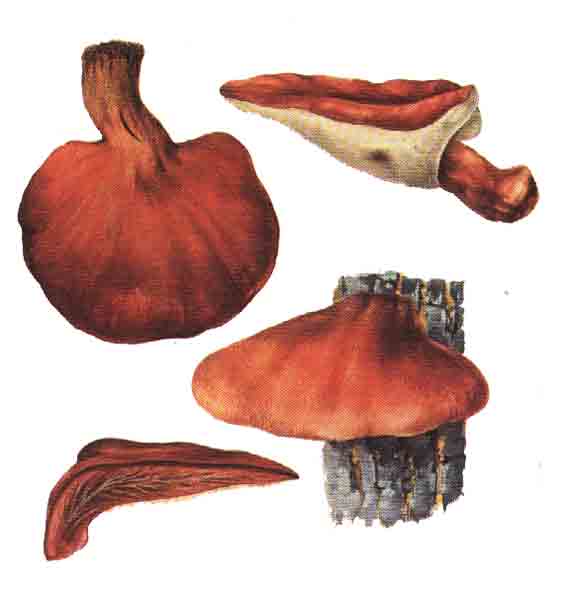

Shaped as an ox tongue, 10-20 cm, extended horizontally and infixed into the trunk of the host plant through a peduncule that is sometimes well differentiated and other times atrophic and unnoticeable. Margin generally thin, sometimes even, sometimes lobate. It is of a liver red color, subdued by the yellow color of the papillae that cover it as long as the mushroom is unripe; then it becomes dark and velvety, and eventually gelatinous. The lower surface is covered with very small tubules, distinctly separated from one another like the bristles of a brush; first yellowish, then pinkish; becoming brownish when bruised. Flesh red, juicy, fibrous, with paler streaks. Odor mild. Flavor between acidulous and bitterish. Spores rosy or cinereous rosy. It grows on old trunks of chestnut and oak trees. Edible: one must discard the upper cuticle and the tubules and leave the rest for a few hours in the seasoning, in order to wash away the acidulous-bitterish juice; then it should be well drained, and moderately seasoned again before serving; it can also be cooked like a cutlet or preserved in oil. Sometimes, some simple specimens of Polyporus sulphureus variety miniatus can be confused with Fistulina hepatica; however, the former has true tubules, yellow and exuding yellowish droplets from the pores; distinctly different from the minute tubules of Fistulina hepatica, which are arranged like the bristles of a brush.